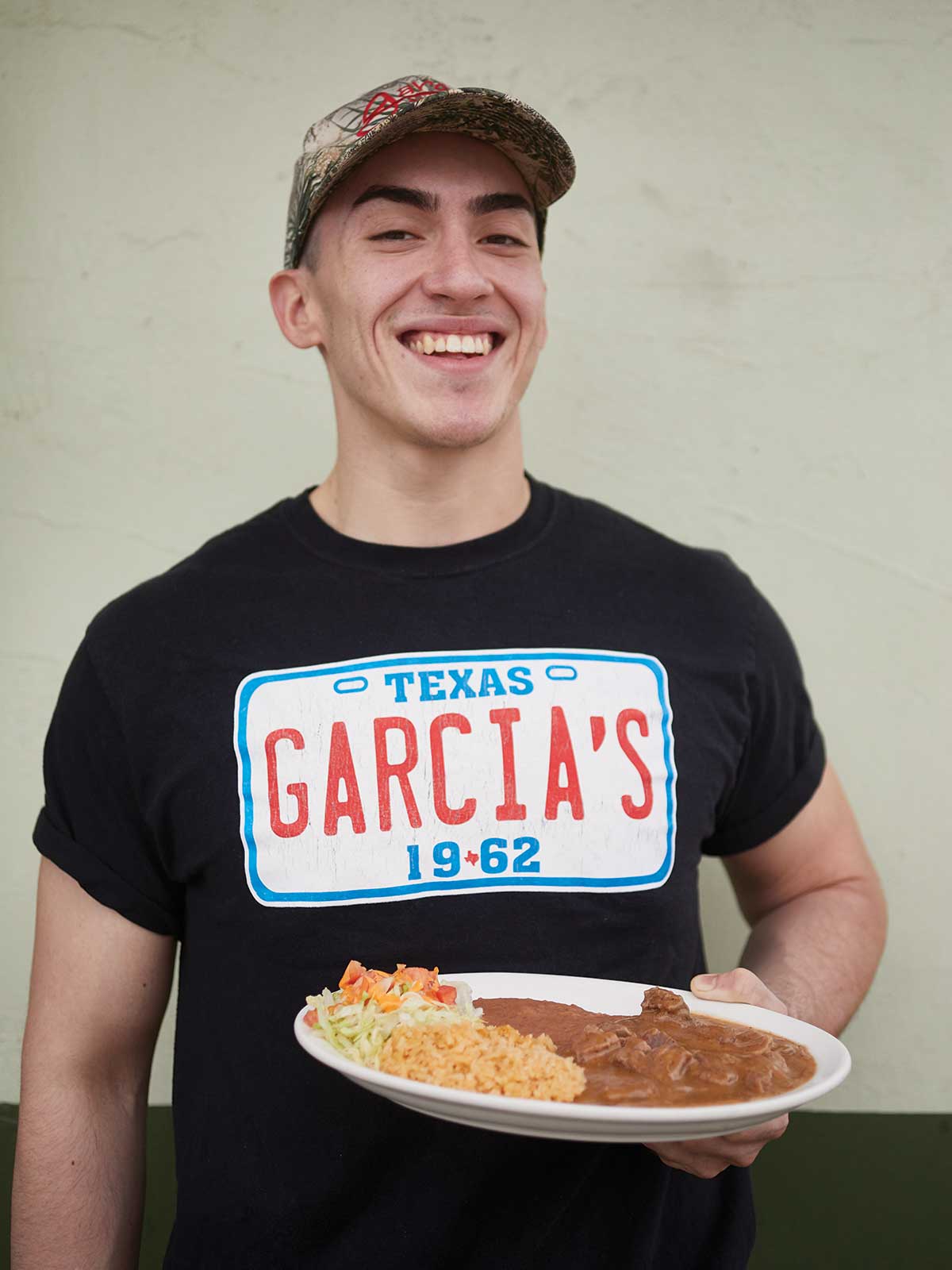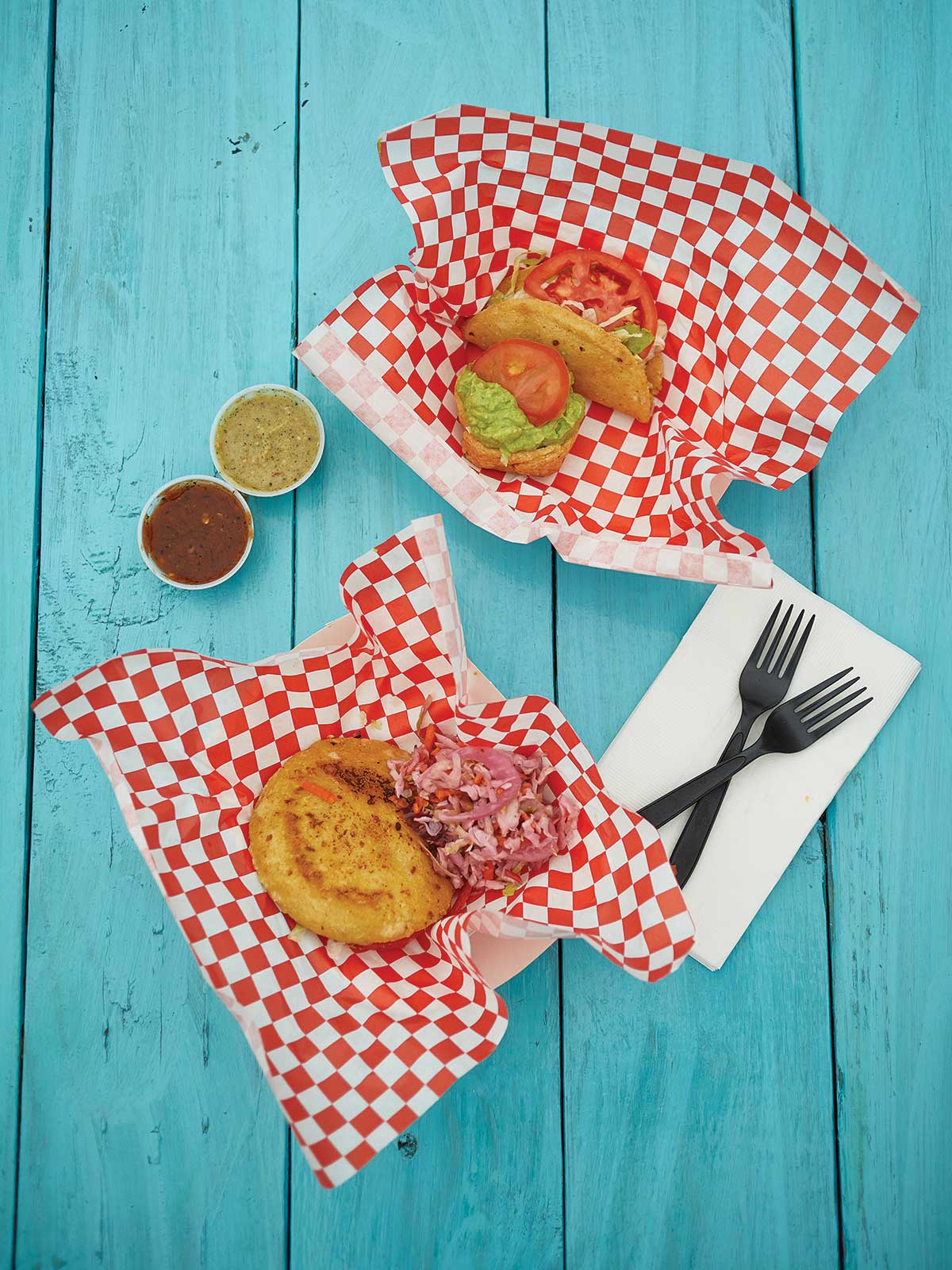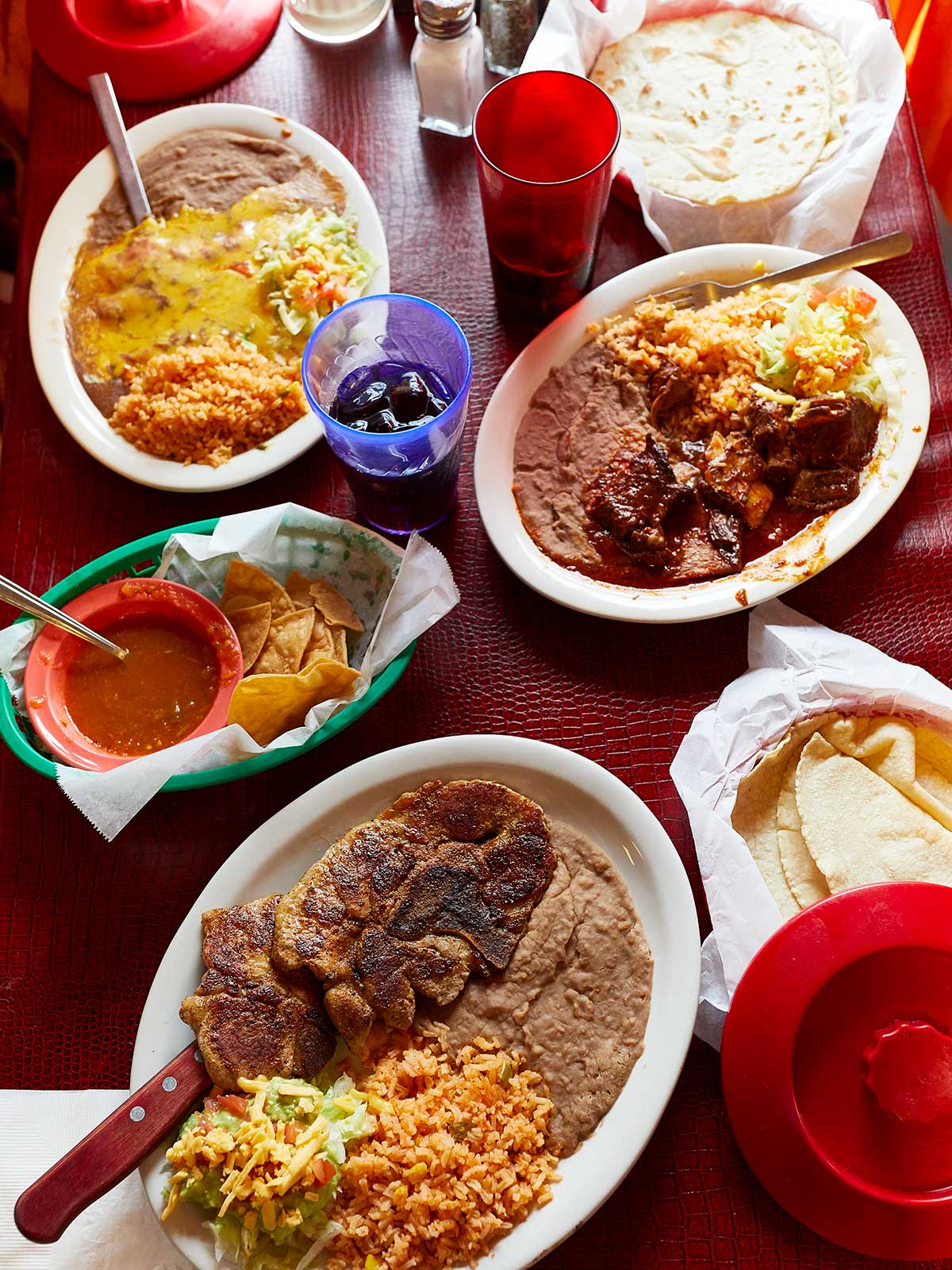Spend any time away from the Lone Star State, and chances are you’ll begin to crave bubbling cheese-and-onion enchiladas, potent margaritas and spicy salsas. We’re talking Tex-Mex, of course, the regional cuisine that was born in Texas and has become our most beloved comfort food. Although the cuisine’s popularity has spread well beyond our borders, we love what we get at home.
San Antonio is the epicenter of Tex-Mex culture and cuisine. The hearty, homey recipes there were created in restaurants run by first- and second-generation Mexican immigrants during the first third of the 20th century.
“Tex-Mex is a glorious yet overlooked cuisine,” says Edmund Tijerina, contributor for San Antonio Magazine and former food editor for the San Antonio Express-News. “A lot of people look down on it because it’s not ‘authentic’ Mexican. Here’s the thing: It’s not Mexican. It’s Mexican American, and it reflects the history, geography and cultures of South Texas, San Antonio specifically.”
The cuisine’s influences are broad, Tijerina tells me, and range from the indigenous use of corn and beans and techniques of pit cooking to the processed foods of the 20th century. “There’s the home cooking of South Texas and northern Mexico,” he says, “simple dishes that many Mexican Americans like me grew up on, and there’s the Mexican-inspired restaurant cooking created by Anglo business owners a century ago of greasy enchiladas and queso dip.”
Until the early 1970s, the cuisine was generally referred to as “Mexican.” Then the term Tex-Mex emerged, stuck and gained national attention, bolstering the dishes with regional pride and a sense of place.
With the enviable charge of tracking down the best incarnations of eight iconic dishes in one day, photographer Jody Horton and I left Austin before dawn and headed toward breakfast in the Alamo City.

Huevos rancheros at El Milagrito Cafe.
Jody Horton
El Milagrito Cafe
Huevos Rancheros
Years ago, I asked my friend Elizabeth Fauerso, a San Antonio native, where locals go for the best huevos rancheros. She sent me to El Milagrito Cafe, and it’s been a favorite ever since. Since 1969, the casual, diner-style restaurant has been griddling homemade tortillas and serving breakfast and lunch plates to a loyal clientele. El Milagrito is best known for hefty breakfast plates like huevos rancheros (two eggs cooked to order, served on crispy corn tortillas and bathed in bright red sauce) served with additional tortillas (for scooping up everything else on the plate), smoky refried beans and the arguable star, papas con chorizo—potatoes fried with crumbled chorizo.

Crispy beef tacos at Teka Molino.
Jody Horton
Teka Molino
Crispy Tacos
Established in 1937, Teka Molino is one of San Antonio’s oldest restaurants. The friendly counter service and tidy, welcoming space make it easy to see why friends gather in groups and solo diners settle in with laptops. Foodie friends urged us to have crispy tacos because the real star here is the masa. The restaurant has milled its own corn since it opened, so naturally it’s known for corn-centric specialties like guacamole and bean cups. The “cups” are corn tortillas shaped into a single-serving cup, fried until crisp and then filled eponymously. The crackly, flavorful shells are packed with moist, shredded chicken (or ground beef), crunchy lettuce, chopped fresh tomatoes and yellow cheese and served with stellar homemade green and red salsas.

Joseph Garcia serves carne guisada, a favorite at Garcia’s Mexican Food.
Jody Horton
Garcia’s Mexican Food
Carne Guisada
Co-owned by brothers John and Andrew Garcia, Garcia’s Mexican Food is a family affair and has been a San Antonio mainstay since it opened in 1962. We arrived midmorning to find the small space dense with cowboy hats at the counter, babies in car seats and friendly banter between staff and regulars. And, of course, wafting aromas of sizzling meat.
Top sellers on Garcia’s comfort-driven menu include carne guisada. Loosely defined as a beef stew, guisada is typically made with meat that’s simmered in a broth thickened with roux and flavored with chiles, spices and aromatics. Andrew’s son, Joseph, served us plates of the warm, tender meat in a peppery gravy. Between bites scooped up with freshly made flour tortillas, John tells me his secret is keeping it simple—simmering the meat with their signature blend of spices for an hour and a half until it is as tender as a Sunday pot roast.

An enchilada combination plate at Jacala.
Jody Horton

Jacala co-owner Lucille Hooker.
Jody Horton

The interior at Jacala.
Jody Horton
Jacala
Enchiladas
Rudolph Quiñones was a young GI when he and wife Adel opened Jacala in 1949. Its current location is a former grocery store that has been adorned with additional dining rooms, a patio and an outdoor courtyard. The restaurant is run by the couple’s three daughters, Cynthia Klauss, Lucille Hooker and Yolanda Showalter. Jacala is as much about family memories as their award-winning enchiladas and combination plates.
“Four generations of our family have been regulars at Jacala, starting with my parents in the 1950s and continuing through today,” says Therese McDevitt, a San Antonio native who worked much of her career in New York before returning home.
For McDevitt, no visit to San Antonio was complete without at least one dinner at Jacala featuring the No. 7 Ladies Special (cheese enchiladas with chili gravy and puffy tacos).

Puffy tacos at Ray’s Drive Inn.
Jody Horton
Ray’s Drive Inn
Puffy Tacos
Puffy tacos—discs of masa that puff and balloon into delicate shells when fried—were born in San Antonio, though their exact origin is the stuff of local legend. The late Arturo Lopez claimed to have invented the deep-fried tacos at Ray’s Drive Inn. His brother, Henry Lopez, claimed that he was the first, at Henry’s Puffy Tacos.
I’m partial to Ray’s because of the vintage Western setting. With its neon signage and stone- and wood-paneled walls, the restaurant looks much like it did when it was founded in 1956. To taste a textbook example of the perfect puffy, order a basket of beef or chicken, but try an avocado, too. Topped with fresh, creamy slices that balance the crunchy shell, the tacos, yellow Spanish rice, creamy pintos and pickled jalapeño create a bucket list meal.

Crispy pork cutlets, a daily special at Blue Moon Mexican Restaurant.
Jody Horton

Tex-Mex dishes in the service window at Blue Moon Mexican Restaurant.
Jody Horton
Blue Moon Mexican Restaurant
Fideo (Y Platos del Día)
We ran through the rain to meet chef Johnny Hernandez at Blue Moon Mexican Restaurant, one of his favorite neighborhood haunts. Housed in a cheery yellow house on South Flores Street, the restaurant is known for its fideo, a South Texas dish of spiced vermicelli noodles and beef that’s served here on Wednesdays. We followed Hernandez’s lead and ordered the platos del día—the daily specials, crispy pork cutlets with beans and rice, cheese enchiladas with chili gravy and meltingly tender short ribs braised in guajillo chile sauce.
“Blue Moon café takes me back to my childhood days on the west side of San Antonio,” Hernandez tells us. “The aroma of freshly rolled flour tortillas is heaven, and they happen to make my favorite menudo with pig’s feet.”

A gordita with cabbage slaw at Lala’s Gorditas.
Jody Horton
Lala’s Gorditas
Gorditas
Less common than tostadas or tacos, gorditas are deep-fried pockets of cornmeal dough filled with savory ground beef or chicken and lettuce, tomato, and cheese.
Steven Pizzini, owner of Lala’s Gorditas, has Tex-Mex in his DNA. His restaurant’s namesake was his maternal grandmother and culinary muse. In 1938, Ernestine Pizzini Chapa, Steven’s paternal aunt, founded the original Teka Molino and relied on her mother’s recipes. After a successful run there, Steven’s father, Herman Pizzini, and his Uncle Eddie opened the beloved Taco Hut in 1958, which served generations of San Antonians until it closed in 1998. The object that drew Steven back into the food business is the heart of Lala’s operation—the original corn mill created by his Uncle Eddie in the 1930s.
These days, that mill gets a daily workout grinding nixtamalized corn (dry corn that’s soaked in a mixture of water and lime) to create the fragrant masa used to make gordita shells. Pizzini’s gorditas are packed with traditional fillings—beef or stewed chicken, lettuce, tomato, crema and a garnish of curtido (Salvadoran slaw).

Chile con queso at La Fogata.
Jody Horton
La Fogata
Chile con Queso
Chile con queso was our last stop and the holy grail of our tour. With its pretty courtyard, massive wooden doors and festive atmosphere, La Fogata provides an instant holiday, no passport required. The restaurant serves authentic queso flameado, a dish from northern Mexico made with molten white cheese and roasted poblanos—as well as the classic Tex-Mex version made with tomatoes, green chiles and a Velveeta-like loaf of pasteurized cheese that melts into a silky smooth consistency.
One could argue the basic elements of queso are more or less the same in every restaurant, so memorable bowls are the result of the company, the setting and the flourish of a topping or two. What sets La Fogata’s apart is a dollop of its smoky, fire-roasted salsa; a basket of warm, freshly fried chips; and its potent, made-to-order margaritas—each garnished with an orchid.



